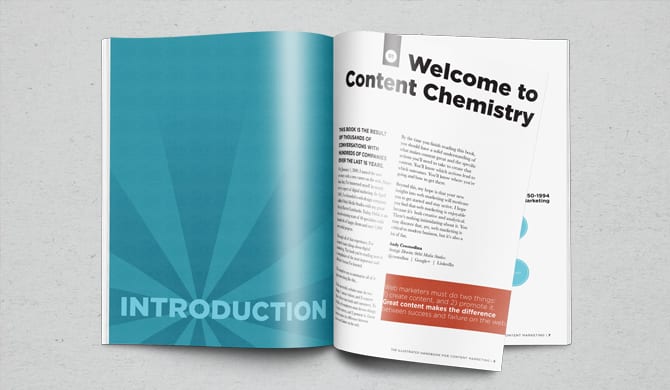So what makes one project more successful than another? A lot of the time, it’s the partnership and communication between the client and the web company. What are the things you can do as a client to get the most out of your project and the people you’ve hired to build your new website?
Here are some tips I’ve picked up from good and bad experiences working with hundreds of clients. Hopefully they’ll help you get the most out of working with us (or whichever company/designer you choose).
1. Define and Know Your Business Going In.
Before your web partner can build an online representation of your company, you need to be able to define who your company is. This might sound obvious, but I’ve had numerous clients struggle more with answering this question than any other. Knowing your products or your main competitors doesn’t mean you know who you are.
- What’s your 30 second elevator pitch?
- If you have three very segregated business units, what is their common thread?
- What makes your company different than your competitors?
2. Communicate with Goals, Not Features/Execution.
Often times, clients can get hung up on how their competitors are doing something or how sites they love work. We get that. You’re excited about the possibilities, and you’re out there checking out the web, seeing what’s going on, getting inspired. I love it! But don’t get hung up on features or execution, focus on the goals and the content. From there, we’ll work with you and make recommendations based on best practices and past experiences.
-
What information is the most important to your clients?
-
What questions do they always have?
-
If you have a current site, how is it not achieving your goals?
This doesn’t mean you can’t talk about features, but start with content. From there, we can team up to make it shine. That’s one of the best parts of the project!
3. Be Practical.
You can’t go into it saying you want to have a site that looks like Apple.com if you sell retirement housing to the elderly. You shouldn’t model your site off of Time.com or NPR.org if you’re not capable of cranking out content 24/7.
Let’s be realistic about your capabilities when it comes to photography, content creation, social media activity, responsiveness, customer service, etc. That doesn’t mean you can’t set high goals, but be reasonable about your company’s capabilities, and we’ll build a site around that. If you plan to grow, that’s great; we always accommodate for scalability.
4. Make Decisions.
Keep in mind that your goal here is to get your new site live. It’s easy to get caught up in the process and over think things. Asking for multiple rounds of revisions on minor details that will have no impact on your conversion rate or bottom line only delay the process.
Trust your team, inquire about the choices they’ve made and reasons behind them, but don’t hold up the process because of a few pixels. Believe me, as a designer I know that’s easier said than done.
5. Don’t Design by Committee.
We all know this one, but it still happens quite often. In fact, I’m willing to bet that most of the time you know it’s hurting your project while it’s happening.
So do your best to be vigilant and empower a team lead who has the authority to make decisions. If everyone gets their two cents included and changes little details just to change them, the whole project will suffer, and the unified vision will be diluted. As the saying goes, a camel is a horse designed by committee.
6. Rely on Your Main Strength: You Know Your Business.
You’ll know when something isn’t right, and that’s what your web company needs from you. They know how to set up the correct paths and build you a beautiful online presence, but you’ll know if it just doesn’t feel like your business.
If this time comes, be as constructive as possible. It may be hard to find the words, but teamwork is paramount at times like these.
7. Be Attentive and Be Engaged.
You’re going to be learning a lot throughout the entire project, and it’s important that you pay attention. You can always come back and ask for help or support, but once your site is launched, it’s your site!
-
When your designer tells you that a certain feature should be set up a certain way to get results, take note! They’re trying to make you money.
-
Keep in mind the logic you hear during presentations; apply it when you create content.
-
Keep in mind the tips and guidelines provided for you on copy length and content creation. Content is king!
-
We’ll build you a 5 star hotel, but you have to run it.
8. Be Excited!
This is your new site, and it has huge potential for your business! This is exciting stuff!
Believe me, your enthusiasm will carry over to your team. People can’t help but work twice as hard for someone who is passionate about their project. An uninterested and inattentive client can suck the life-force out of everyone.
We love this stuff. We want you to, as well.
What’s Worked for You? Share in the Comments.
Every project is different, and we’d love to hear about your successful and unsuccessful experiences. What have you learned?
And if you have any tips for us, as a web company, when it comes to working with clients, please share those, too!




